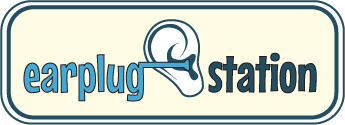NRR
If sound levels aren't avoidable, earplugs are the solution. The next step is to find the right earplugs based on the noise level you are trying to block out. A Noise Reduction Rating (NRR) refers to the measurement of noise in decibels. The system is designed to determine what type of noise protection is required in the workplace for occupations that require working around some level of noise.
What Does an NRR Number Mean?
The higher the NRR number, the greater the noise reduction. This number is subtracting from the actual decibel level to determine the amount of noise exposure. The NRR refers to the level of noise exposure you would experience while wearing earplugs or other noise reduction devices. If, for instance, you were exposed to a noise level of 80 decibels and wearing earplugs with a NRR of 30, you would be exposed to 50 decibels of noise while wearing the earplugs.
What is Considered Excessive Noise?
According to international and national standards and applicable Occupational Safety and Heath (OSH) guidelines for volumes in the workplace, excessive noise is generally defined as exposure to noises ranging from 85-90 decibels or more over an eight hour period. Sustained levels of noise considered dangerous by most experts - with decibel levels ranging from 90 to 140 - include lawnmowers, airplane engines, firearms, some power tools, tractors, motorcycles, fireworks and industrial machines. General decibel ranges include:
Faint
• 20 decibels - very quiet whispering
• 25 decibels - refrigerator operating
• 30 decibels - light rain on a window, a quiet library
Moderate
• 50 decibels - moderate rainfall
• 40 decibels - quiet room with ambient noise
• 55 decibels - air conditioning unit running in a room
Loud/Very Loud
• 60 decibels - conversation, microwave buzzer
• 70 decibels - vacuum cleaner
• 80 decibels - alarm clock
Extremely Loud
• 90 decibels - lawnmower, heavy traffic, power tools
• 100 decibels - chain saw, snowmobile
• 110 decibels - industrial machines, garbage disposal
Painful
• 120 decibels - jet plane engine taking off, car stereo
• 130 decibels - jackhammer
• 150 decibels - rock concert
How Accurate Are Noise Reduction Ratings?
NRR is meant to be an indication of how much noise earplugs block out and how much outside noise is still heard while wearing earplugs. Studies over the past 25 years have shown that NRR numbers often overestimate the amount of noise that is blocked out by earphones. This is based on laboratory tests performed on human test subjects wearing various earplugs and other noise blocking devices. OSHA, NIOSH and even some hearing protector manufacturers have recommended either adjusting the ratings or using a range rather than a specific number.
Proposed NRR Changes
The United States is one of several countries proposing changes to the NRR system. One suggested change would use a two-number range where the higher number would be an estimate of the results of one-in-five wearers and the lower number would be an estimate of the protection four-out-of-five wearers would have within that range. The idea is to allow for varying conditions so that the correct earplugs can be selected.
NRR and Other Types of Earplugs
Earplugs worn by musicians or frequent travelers aren't designed the way typical earplugs are designed. Earplugs used by musicians, for example, are designed to block out distracting background noises while still letting in the sound of the human voice. Laboratory tests don't always take these special types of earplugs into consideration when determining NRR.
What Can Be Done to Reduce Excessive Noise?
A main reason for the discrepancy in NRR numbers is due to additional factors that determine how effectively earplugs block out noise - such as the proximity to the noise source - that are not always easy to accurately pinpoint. This is why it is important to take additional precautions to boost the NRR of the earplugs you are using. Some ways to boost the NRR by reducing excessive noise include:
• Using barriers to block some of the outside noise
• Moving as far away from the source of the noise as possible
• Using updated equipment to reduce the noise source
Noise Reduction Ratings can be increased with a combination of effective noise reduction devices and the implementation of procedures to reduce outside noise as much as possible. Proposed ratings changes could also help to improve the accuracy of these numbers to ensure that the correct earplugs are chosen to reduce potentially harmful noise exposure.
